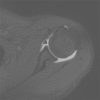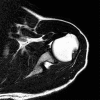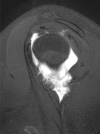An overview of shoulder instability and its management
- PMID: 24082972
- PMCID: PMC3785059
- DOI: 10.2174/1874325001307010338
An overview of shoulder instability and its management
Abstract
The assessment and management of patients with instability of the shoulder joint can be challenging, due to the varying ways patients present, the array of different classification systems, the confusing terminology used and the differing potential management strategies. This review article aims to provide a clear explanation of the common concepts in shoulder instability and how they relate to the assessment and management of patients. There are sections covering the mechanisms of shoulder stability, the clinical assessment of patients and imaging techniques. Beyond that there is a discussion on the common classifications systems used and the typical management options. Some patients fall into reasonably well defined categories of classification and in these cases, the management plan is relatively easy to define. Unfortunately, other patients can elude simple classification and in these instances their management requires very careful consideration. Further research may help to facilitate a better understanding of management of the patients in this latter group.
Keywords: Shoulder; dislocation; instability; shoulder arthroscopy; subluxation..
Figures









References
-
- Warner JJ, Deng XH, Warren RF, Torzilli PA. Static capsuloligamentous restraints to superior-inferior translation of the gleno-humeral joint. Am J Sports Med. 1992;20:675–85. - PubMed
-
- Budoff JE. In: Core Knowledge in Orthopaedics, Hand, Elbow and Shoulder. Trumble TE, Budoff JE, Cornwall R, editors. PA: Elsevier Science; 2006.
-
- Warner JJP, Deng X, Warren RF, Torzilli PA, O’Brien SJ. Superoinferior translation in the intact and vented glenohumeral joint. J Shoulder Elbow Surg. 1993;2:99–105. - PubMed
-
- Itoi E, Hsu HS, An KN. Biomechanical investigation of the glenohumeral joint. J Shoulder Elbow Surg. 1996;5:407–24. - PubMed
-
- O’Brien SJ, Neves MC, Arnoczky SP, et al. The anatomy and histology of the inferior gleno-humeral ligament complex of the shoulder. Am J Sports Med. 1990;18:449–56. - PubMed
LinkOut - more resources
Full Text Sources
Other Literature Sources
